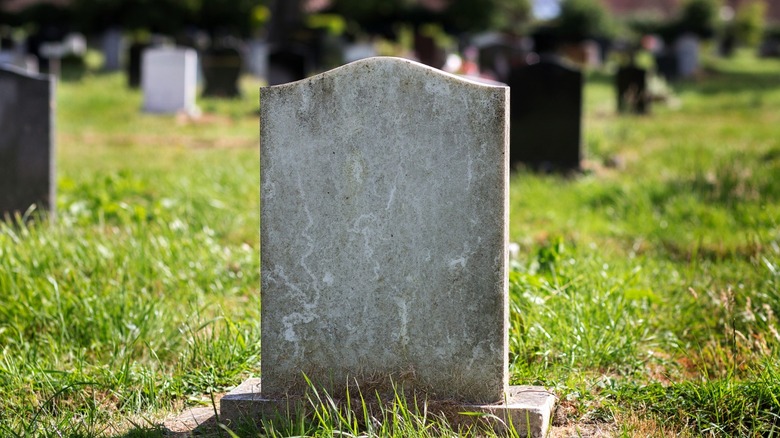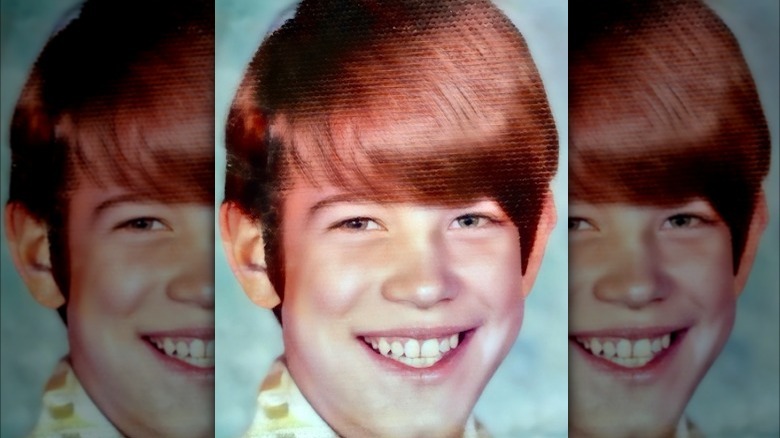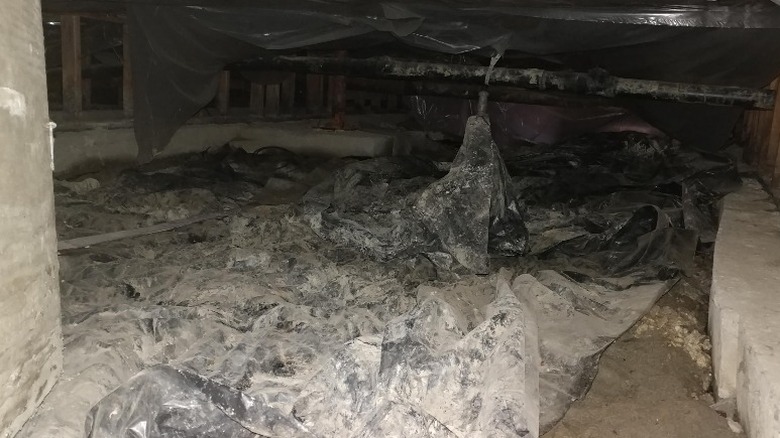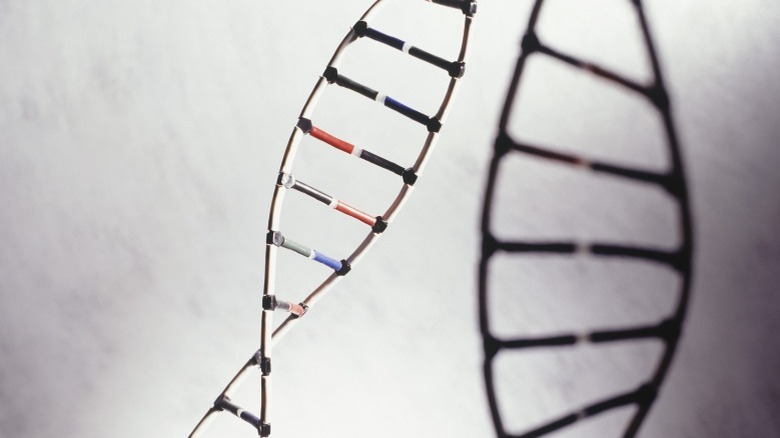The Mysterious Case Of The John Wayne Gacy Victim Identified Decades After His Death
Try to imagine the frustration investigators experience when they are faced with identifying the body of a John Doe found at a crime scene. A body that lacks identification is a sure roadblock to overcome. Adding advanced decomposition to the mix further complicates efforts. Even when the killer is known and in custody, there is still no assurance that they'll cooperate and give up the name, provided they knew it in the first place.
Now imagine the panic and despair the loved ones of a missing person endure. As the days fade into months, and the months grow into years, the sense of knowing that the victim might never be seen alive again settles in slowly and agonizingly. Maybe death is tearfully accepted, but without their body or a clue as to what led them to their end, closure is likely far from their clutches.
Advances in forensic science have made identifying unknown victims from cold cases a reality. DNA evidence has not only led to getting the loved ones of missing persons that needed closure but has also resulted in the capture of some assailants years or even decades after the crime was committed (via The Bellevue Gazette). When it was discovered that John Wayne Gacy had murdered 33 young men, investigators were unable to identify all of his victims (per the Chicago Tribune). But as recently as 2017, forensic technology was able to link the case of a missing 16-year-old boy to an unidentified body found on Gacy's property.
James Byron Haakenson was a teenage runaway
Sixteen-year-old James Byron Haakenson left his home in Saint Paul, Minnesota, in the summer of 1976 to seek his fortune elsewhere. Classified as a teenage runaway, not much is known of Haakenson's whereabouts between the time he left home and when he called his mother on August 5, 1976. CNN reports that the teen spoke with her and let her know that he had arrived in Chicago. It would be the last time that anyone reported speaking to him. As time passed, his family began to become more concerned that he had not contacted them again. This prompted his mother to file a missing person report with the Saint Paul police on September 2, 1976 (per Star Tribune). This report was little more than a formality, as no investigative arm of any police agency ever recovered a trace of Haakenson.
Unbeknownst to anyone at the time, his body was lying in a shallow grave beneath the home of one of the most twisted serial killers of the 20th century. At some point shortly after his phone call home, Haakenson was lured away by John Wayne Gacy (per CNN). How Gacy and Haakenson became acquainted will most likely forever remain a mystery. Gacy was known to prey upon teenage boys who might be looking for work, setting up a likely scenario where he may have led Haakenson to his house with the promise of steady employment. He subjected his victims to sexual assault and torture before an agonizing death by strangulation (per Radio Times).
If you or anyone you know has been a victim of sexual assault, help is available. Visit the Rape, Abuse & Incest National Network website or contact RAINN's National Helpline at 1-800-656-HOPE (4673).
Gacy drew a map for police
When the news of John Wayne Gacy's arrest and crimes came to light in December 1978, it aroused the curiosity of James Byron Haakenson's family. In fact, the missing boy's mother went so far as to contact the police in Saint Paul about her suspicions. Of the 33 known Gacy victims, 27 were found buried in shallow graves in the crawlspace under his house. Two more were interred in the backyard, while four more were recovered from the Des Planes River (via Star Tribune).
After his confession, Gacy agreed to cooperate with authorities. Shortly after his arrest, he made a hand-drawn map of the locations of his victims' bodies beneath his home. While this was helpful in unearthing the more than two dozen bodies from their makeshift graves, it shed little light on who some of them might be. It was announced that almost 25% of Gacy's victims were unidentified (per Star Tribune). Hearing this, Haakenson's mother thought her teenage son might have been discovered. The police in Saint Paul made contact with investigators in Chicago, who didn't have much to go on. The body was too badly decomposed to identify, and forensic science had not evolved enough by the late 1970s for DNA to provide any missing pieces. The police were routinely using dental records, which Haakenson did not have.
With little more to go on, Haakenson's missing person case remained unsolved. CNN tells us that these eight unknown victims were buried by the police in various locations around Chicago. But they had the foresight to remove the jawbones from each one, storing pieces of evidence that would later solve part of the mystery behind Haakenson's disappearance.
The position of the bodies aided police in their timeline
Based on John Wayne Gacy's map of the bodies he had buried, police were able to recover the remains of all 27 men and boys that were interred by the serial murderer in the crawl space (via Star Tribune). As this subterranean graveyard had limited space, Gacy was forced to bury bodies on top of each other. This helped investigators determine a pretty tight timeframe as to when many of the victims had been killed.
James Byron Haakenson, who was referred to as "Victim No .24" before he was successfully identified, was buried in between two males (per CNN). Beneath him was an unidentified boy known as "Victim No. 26." On top of Haakenson was the body of Rick Johnston. Johnston was last seen at a concert he was attending at the Aragon Ballroom. Investigators concluded that Gacy killed the man on August 6, 1976. As Haakenson was beneath Johnston, it was easy to determine that Gacy had killed him before Johnston. As the last known contact from Haakenson was on August 5, it was established that Gacy murdered him later that day.
While the investigation was unfolding, police were actively trying to identify the bodies of the eight poor souls they found under Gacy's house. Knowing the approximate date of death provided some valuable clues, but to get the rest of the missing pieces, they would need forensic science. Public outreach, new technology, and a persistent relative of Haakenson combined to provide them.
DNA technology makes a match
CNN tells us that the son of James Byron Haakenson's sister saw how the county was still trying to learn the identities of the remaining John Wayne Gacy victims. Knowing that his grandmother had once thought Gacy might have been why Haakenson was never heard from again, he encouraged his father (Haakenson's uncle) and his aunt (Haakenson's sister) to submit their DNA for a potential match. More than 40 years after he was last heard from, police were able to use DNA evidence to identify "Victim 24." Cook County Sheriff Thomas Dart stated in 2017 that the DNA samples taken from Haakenson's two siblings were an "immediate hit," helping to give the family closure and shutting the lid on one file for Chicago investigators (per CNN).
In an interview with "As It Happens," Haakenson's sister, Lorie Sisterman, expressed her feelings about receiving the news. She credits the efforts of the investigators and the insistence of her nephew for the family finally getting answers. This provided a bittersweet conclusion to that chapter of their lives that had waited four decades to end. "We've found Jimmy. It's so wonderful, we're so happy, but, in the meantime, we're devastated he was one of the victims," she stated. She revealed that their mother had already died, going to her grave without knowing what happened to her son. While that fact troubled Sisterman, she said she did take some solace in the fact that her mother would never have to know that Haakenson was a victim of Gacy's.
Other victims are yet to be identified
In the decades that have passed since John Wayne Gacy's crawl space of horrors was discovered that memorable holiday season of 1978, police have worked to whittle down the eight unknown victims to five. But identifying them will take time and new leads. The Cook County Sherriff's Department stated that it has exhumed the remains of all five unknown men and boys and taken DNA samples from each of them. These DNA profiles will be the best way to figure out who they are and possibly shed some light on when they were murdered.
The police agency reports that some of Gacy's victims were estranged from family, and some might not have even been from the Chicago area. Gacy was known to cruise bus stops and railway stations for potential victims. Police say that people with a male relative who went missing between 1970 and 1979 are encouraged to submit their DNA as a potential match. To be the most accurate, the sample should be from a willing close relative of the missing person.





